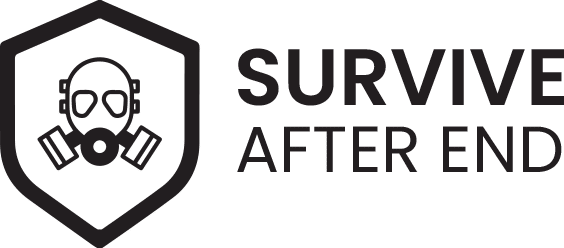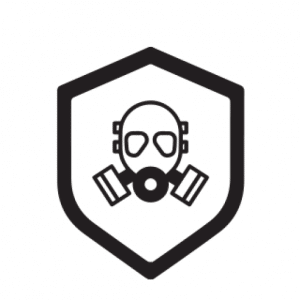Sharing information is your first line of defense when it comes to preparedness.
Let’s face it, we want to be as informed as possible about worst-case scenarios that could happen during a disaster – and there are plenty of those.
Below are a few method of communication that will help ensure that you and other members of your family are provided with the necessary information needed to stay safe.
Table of Contents
1. Tools and Devices to Stay Connected
1.1.1 Radio
This is a common point of reference when discussing communication without power.
Many people associate radios with disaster preparedness, but they have many other uses for everyday life. Here are some ideas on ways to use your radio in case of emergency:
Keeping tabs on the weather – most radios are equipped with NOAA weather channels that broadcast real-time weather information such as high and low temperature, precipitation, and wind speed and direction.
During an emergency, radio signals travel much further than cell phones.
Even in a regional or national disaster, you should stay tuned to your local news stations.
If cell networks are down, amateur radio(ham radio) and military radio operators will send important information across much wider areas.
1.1.2. Hand Crank Radio
Hand crank radio is one of the most popular choices for preppers.
When you run out of power, all you need is to give it a crank, and it’s ready to go!
1.1.3. Portable solar radio & cell phone charger
This product combines a solar radio with USB ports to simultaneously charge your cell phone.
1.2. Cellphone
Cellphones are indispensable in a disaster situation.
Not only will they serve as great communication devices, but they also come stocked with a flashlight and emergency weather alerts, which you can use for awareness.
Keep in mind that mobile phones are not as reliable as radio and landlines for information during a disaster.
During the disaster, cell phone coverage may be either unavailable or spotty at best.
Still, the phone may be your only connection to your family and friends outside of radio and television.
The video below will teach you how to activate the government alert or some sort on your phone to get an emergency alert.
1.3. Land Lines
Landlines(home phone) are becoming increasingly unpopular, as many people have gone wireless. As a result, you may be concerned if landline communication is of any value in an emergency.
Remember that landlines will work even when there are no power outlets available.
1.4. Walkie Talkie or Two-way Radio
Walkie-talkies are another great way to keep in touch with your family members during a disaster.
Walkie-talkies are portable radio transceivers for two-way communication.
They are effective for short-distance communication even when cell phone signals are unavailable.
You can communicate between each other and people far away through relaying messages from one person to the next on the same channel.
1.5. Personal Locator Beacon (PLB)
A PLB is a simplest and most affordable way to send emergency responders to your location.
The device receives a signal from a satellite, then broadcasts a unique code on a designated frequency.
This signal will be picked up by search and rescue teams, who can then transmit your coordinates to rescuers via GPS.
*PLBs Must Be Registered
If you buy a PLB, you’ll be required to register it with the National Oceanic and Atmospheric Administration (NOAA).
PLB will assign you a unique identification number that will be used to identify your location.
1.6. Personal Satellite Messenger (PSM)
PSMs can also send an SOS signal. They offer communication options, too.
Many other functions come with owning a PSM; it can send/receive non-emergency messages, GPS navigation features (varying by model).
Keep in mind it does require a subscription fee (price varies from a different provider).
2. Communication tips during disasters
Communication is important during a disaster because it helps you stay connected with the world and those around you.
Here are some tips for getting information during a disaster:
2.1. Check Social Media for Disaster Response
If you still have internet connectivity, keep an eye out for emergency updates on Twitter, Facebook, and other social networks.
You can also send a tweet with your location to help others find you.
Join your local community Facebook group or form one of your own. It’s a great way to ask questions, get information about what’s happening, and keep track of friends and family.
2.2. Text Messaging
Expect network congestion during a major disaster event, as a backup, you can also send a text message with your exact location to help someone find you.
Be very specific about what street you’re on and who or what you’re looking for.
2.3. Look for radio signals
If you’re out in the open, look for any weak radio signals from other individuals who might be broadcasting information.
Listen to local and national radio stations for updates on the situation.
2.4. Look for emergency broadcasts:
Keep an eye out for emergency broadcast information on television or radio, as they will typically give updates and instructions in the event of a serious disaster.
3. Preparations steps for communication before, during, and after the disaster
3.1 Before
A. Prepare a communication plan
Make a family communication plan so that you and your family know what to do in the event of an emergency situation or disaster.
You want a plan that works well with your family’s personalities and with your household arrangements, especially if you have children who will be home from school during the day.
Read more about how to communicate during an emergency on Ready.gov
B. Practice
Ensure your family knows what to do in a communication emergency — for example, making sure everyone knows how to get in touch with you if they need extra help.
Practice the plan with your family and let them know it’s okay if they ever see something on TV or read an article that makes them think they should call or text you.
3.2 During
A. Get a Preparedness Kit:
You should have a family emergency communications kit (preparedness kit) ready to go, so you are prepared for the day when disaster strikes.
A preparedness kit is a collection of supplies and tools that you can use in an emergency.
You should prepare at least one for each of your family members.
B. Practice:
Continue practicing your family communication plan, so everyone knows what to do when they see something on television or read an article about a disaster happening nearby.
3.3 After
A. Watch out for the media and stay informed
If the disaster has passed or was contained, it is still important to know what happens next.
Stay informed and watch out for the media in case there is another emergency.
Make sure to follow local and national news, national weather service radio., and other family communication resources posted on social media websites like Twitter and Facebook.
B. Stay in touch with your family
If you and your family are safe, stay in touch with the people you’ve left behind.
If you have lost power, water, or gas, contact neighbors and let them know that help is on the way.
If you’re still stuck outside, use a satellite phone or whatever emergency communication device mentioned before to connect with someone else who has been watching out for you.
4. Recovery Steps to Restore Communications
You may have lost power or internet access, but the tips here will help restore communications in a crisis.
4.1. Use a satellite phone
If you have access to a satellite phone, use it to call or text your family, friends, neighbors, or others who may have resources you can get help from.
4.2. Use a cellphone:
Conversely, if you do not have access to a satellite phone and your power or internet is out, find out what your cell phone plan offers and use the emergency phone feature on that plan.
4.3. Use the radio
If you and your family do not have access to either a cell phone or a satellite phone, you can still get help if you have access to a radio or scanner. Find out what’s available in your area.
4.4. Be patient
Not everyone has the same number of options, and the possibilities that do exist may not be available to everyone. However, do not lose faith in trying to get help.
4.5. Find out about the resources available
If you have a cell phone, try it first. You can also check with your local radio or television station to see if they have power or internet service. If you are not in a metropolitan area, try your local newspaper.
4.6. Use social media
If you have access to a computer, you can also search online for help specific to your situation.
Most social media apps also have emergency alert features that can be activated during an emergency, which is especially helpful if the disaster impacts your local area’s power and phone lines.
4.7. Keep an eye on free emergency apps
Keep an eye on free emergency apps like FEMA so you will able to know what is happening.
Additionally, the video below introduces a few survival apps that help you survive in a tough situation.
4.8. Ask people in the community:
Chances are, a lot of people have been impacted by the same disaster, and it may be a good idea to ask them what they know to help you get back on track.
4.9. Create a list:
Before the disaster hits, create an emergency contact list and resources that will help you in the event of an emergency.
4.10. Have a plan:
Create a plan in advance of any emergency, whether it’s a natural disaster, such as an earthquake or hurricane, or something else.
Make a note of any special needs you have, and remember to include emergency numbers for your medical issues and medications.
Start collecting phone numbers and email addresses for your family.
Conclusion
After informing yourself about all the ways you can communicate during an emergency, you will be learn how to communicate better in the next disaster.
You will know what to do in the event of a natural disaster and how to protect your family and friends during a crisis.
There will be no surprises, and you’ll be able to get back on the path of normalcy. This will make an already painful situation much easier to deal with.
———-
External Resources:


